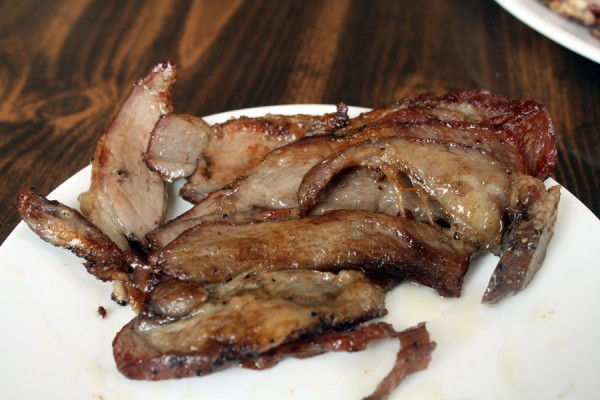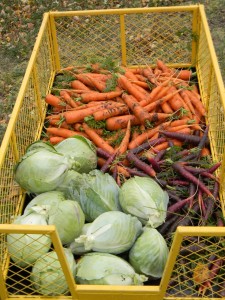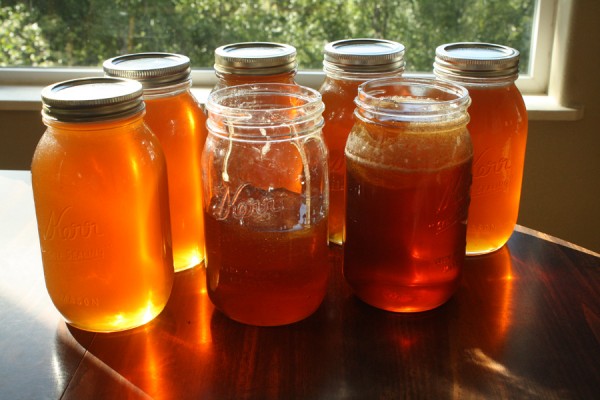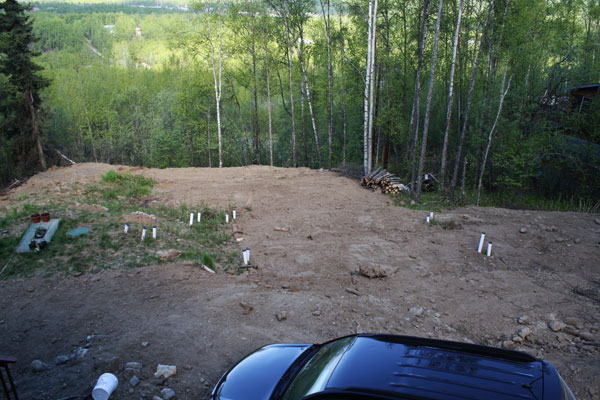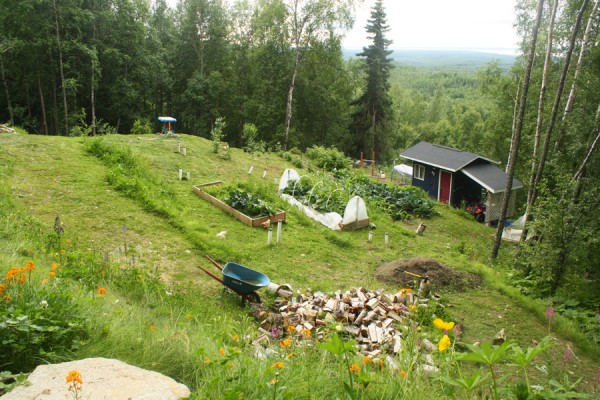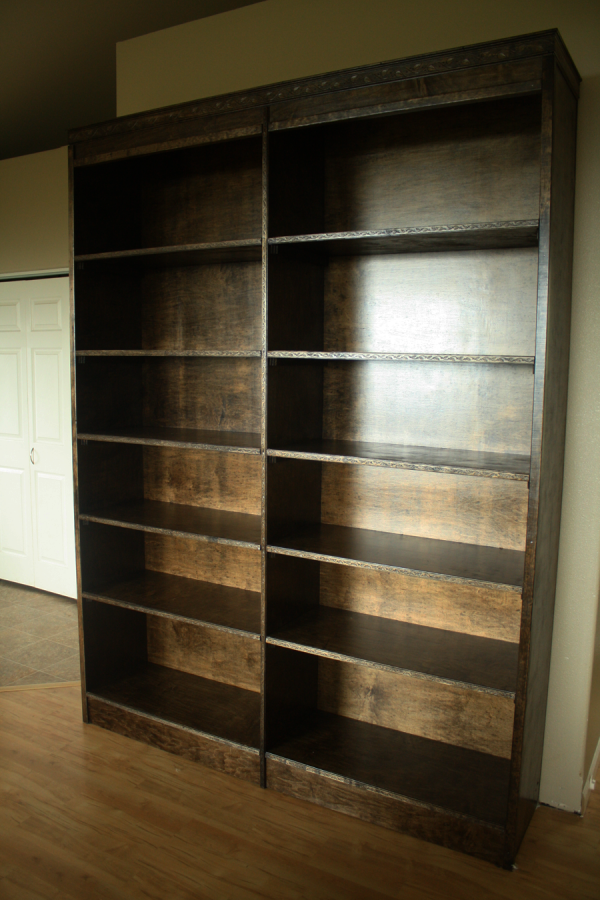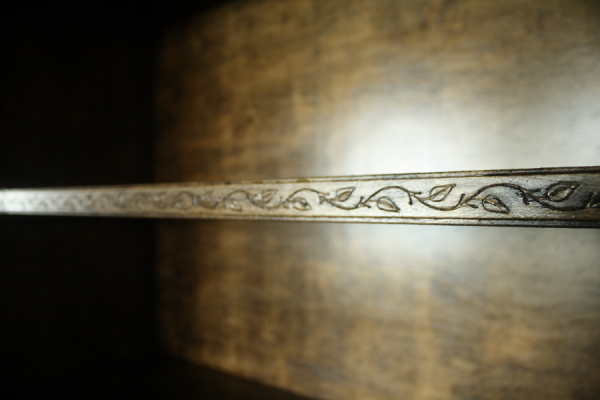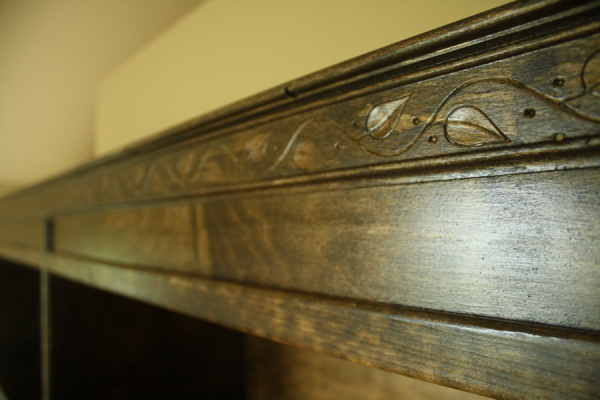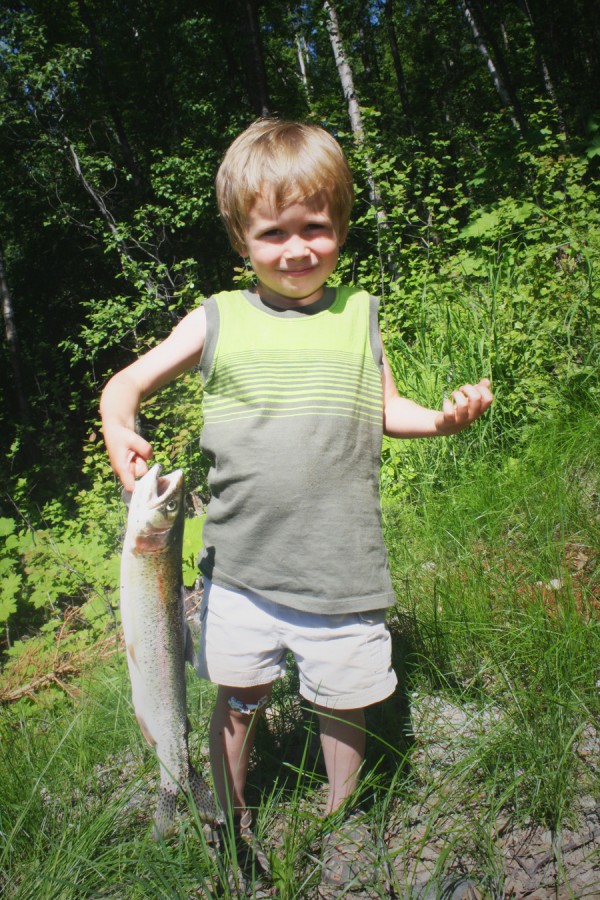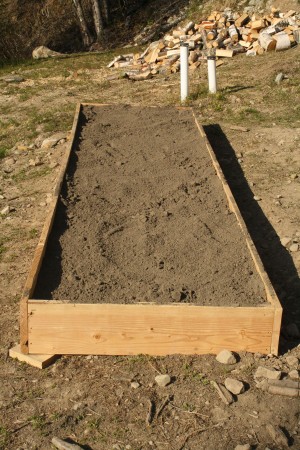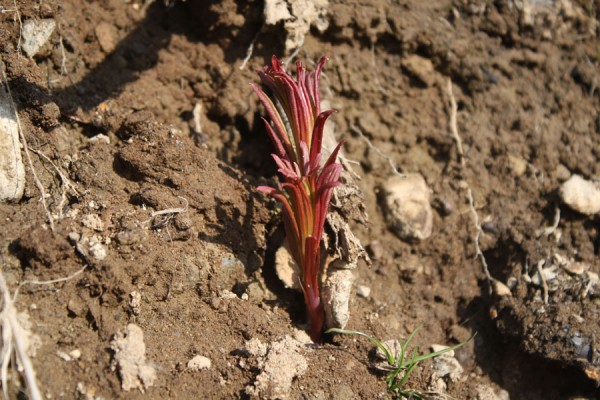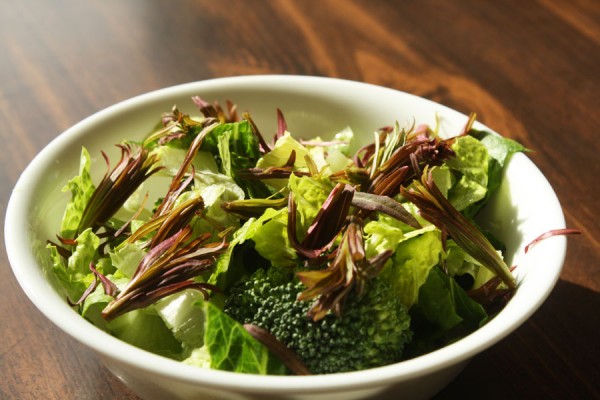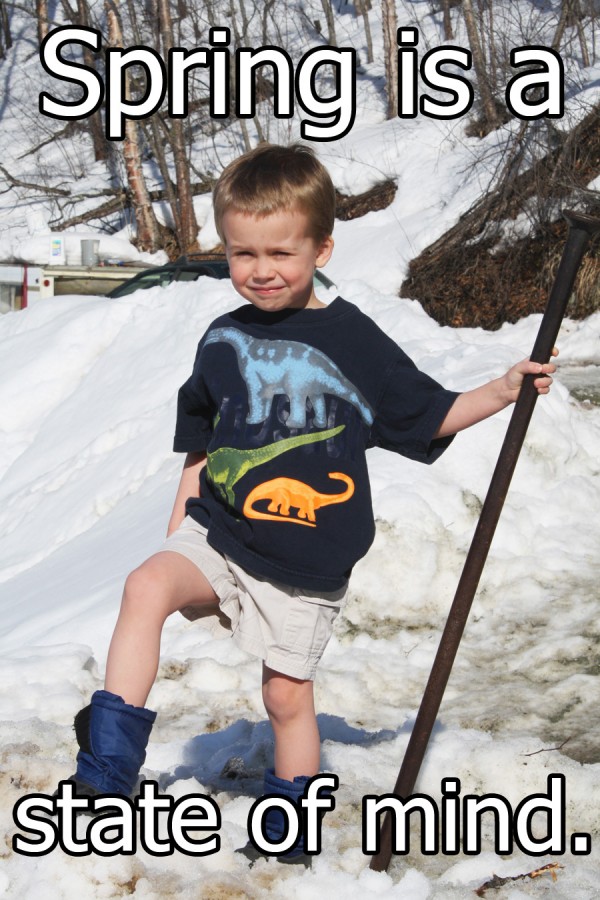Caribou Summer Sausage
My brother and I had a terrific hunt last fall where we were both lucky enough to harvest a caribou. Because we harvested big bulls, and it was after the rut, we decided to make most of the meat into sausage. We cut up the meat into chunks last fall and froze them in freezer bags. Because we knew the meat was likely going to be fairly strong-tasting after the rut, we tried a new strategy this year: we soaked the meat in milk.
It sounds weird, but a quick internet search reveals that milk been used by many hunters to take the “gamey” taste out of venison. We figured it might work for post-rut caribou too. Sure enough, it did. It took several days for the meat to thaw, and then it was soaked in milk for 24 hours. We drained the milk and rinsed off the meat. On accident, some of the meat had not been covered in milk, and the difference in aroma of the milk-soaked versus regular meat was pronounced. If we harvest post-rut bulls again, we’ll definitely be using this strategy once more.
We mixed our caribou 50/50 with pork shoulder while making the summer sausage. If I had to do it again, I would probably use a 2:1 caribou to pork ratio. It just seemed a little too “porky.”
I’ve already written a blog post on making your own summer sausage, but this time we decided to create our own recipes. The pre-mixed summer sausage seasoning from Alaska Butcher Supply contains MSG, and we weren’t really thrilled by that. Below you’ll see our recipes and our notes on the finished product.
Regular Recipe:
- 25 lbs ground caribou/pork
- 3 cups water
- 15 tbs salt
- 1/4 cup mustard seeds
- 1/4 cup ground pepper
- 3 tbs garlic powder
- 1 tbs marjoram
Notes: I would say this recipe tastes better than the store-bought mixes. It simply tastes like your typical “summer sausage flavor.”
Spicy Recipe:
- 25 lbs ground caribou/pork
- 15tbs kosher salt
- 2/3 cup red pepper flakes
- 2/3 cup mustard seed
- 4 tbs ground black pepper
- 4 tbs onion powder
- 2 tbs garlic powder
- 3 cups water
Notes: This was by far my favorite recipe. I like all things spicy, and while this recipe gave the sausage a little kick, I think I will add more pepper flakes (or jalepenos or cayenne powder) the next time to make it even spicier.
Sweet Recipe:
- 25 lbs ground caribou/pork
- 3 cups water
- 15 tbs kosher salt
- 1 1/2 cups brown sugar
- 4 tbs pepper
- 4 tbs mustard seed
- 2 tbs garlic
- 2 tbs onion
Notes: This one was, by far, the most unusual. It wasn’t bad by any means, but one could definitely taste the sweetness of the sugar. I think this recipe will work well for sausage sandwiches, and I’ll be curious to see how my kids like it.
Cottage bacon
A couple years ago I wrote a blog entry on how to make your own bacon. For a while now, I’ve had the itch to make more. The problem with making bacon is it can be prohibitively expensive. There is only one place in southcentral Alaska that sells raw pork belly, and they want $3.80 a pound for it. By the time you lose water weight from the cure, take off the pork skin, and buy the ingredients for the cure, you’re looking at bacon that costs close to $7/lbs. While I’ve gone that route before, it sounded too expensive to do again.
Then I found out about cottage bacon. Cottage bacon is simply bacon made from pork shoulder instead of pork belly. It’s leaner than regular bacon, and far cheaper to make. With that in mind, I set off to make my first batch of cottage bacon.
A Note on Nitrites/Nitrates:
I have some very strong ideas on the use of nitrates and nitrites in meat. I never use them in my bacon or sausage, and have done a fair bit of research on the dangers of nitrites and nitrosamines. I know the quality and care I put into making bacon and sausage, so I feel the nitrites are unnecessary.
However, nitrites are added to cured and processed meats to protect us from many harmful microorganisms, including botulism. Nitrites are sold as “pink salt” or sodium nitrite. If you choose to not use nitrites, you do it at your own risk. It’s a risk my family and I are willing to take, but you must make this decision on your own. Alaska Butcher Supply sells “pink salt.” If you use pink salt, add 12 grams of pink salt per 5lbs of meat, and make sure to reduce your regular salt by those 12g.
THE PROCESS:
1. Get pork shoulder. Costco sells pork shoulder (also called pork shoulder butt). My wife went in to Costco and asked for “pork butt.” After the employee realized she wasn’t kidding, she eventually found my wife the right cut. Boneless, it costs about $1.80 a pound here in AK. The package I purchased was about 15 lbs of pork and consisted of two shoulders. I cut each shoulder into half to end up to end up with four pieces of meat weighing in just under 4lbs a piece.
2. Make and add your cure. Since I had two shoulders, I decided to try two different cures. The important ratios to remember for any cure is the ratio of salt to meat and the ratio of salt to sugar. This will ensure your bacon does not come out too salty or too sweet. For instance, you should have about 12 grams of kosher salt for every pound of meat. Likewise, when adding a sweet taste, such as with maple and brown sugar, your bacon cure should have a sugar to salt ratio of about 2:1.
Below are my cure recipes for 5 lbs of pork. Do the math to adjust as necessary:
Maple and Brown Sugar Cure:
- 60 grams kosher salt
- 60 grams of brown sugar
- 60 grams of maple
Black pepper rub:
- 65 grams of kosher salt
- 25 grams sugar
- 1/3 cup of course ground black pepper (add pepper to rub). After the pork has cured for a week, and you’ve rinsed it, add a layer of pepper onto one side of the pork shoulder, to taste.
3. Let the pork cure for a week. Place the pork in ziploc bags and turn the pork over every day. The salt will draw out some of the liquid in the meat, and flipping it ensures the cure is able to evenly penetrate all parts of the meat.
4. Develop a pellicle. After a week, take to pork out of the bags. Rinse and pat dry. Then leave the pork, uncovered, in the fridge for 24 hours. This will create a sticky coating on the outside of the meat called a pellicle. The pellicle is what “takes up” the smoke flavor.
5. Smoke the bacon at 200F until the internal temperature reaches 150F. You can do this many ways. If you don’t have a smoker, you can add a pan of wet wood chips to a grill, allowing the bacon to take up some of the smoke flavor. Then you can finish it off in the oven at 200F. You can also do all of the smoking/cooking on the grill itself. You just don’t want the temperature to get more than about 200F, or the fat in the bacon will begin to melt. When I smoked the bacon in our home-made smoker, it took about 3 hours to reach 150F internal temperature.
6. Slice, package, freeze, or enjoy! Below you’ll see a picture of my cottage bacon. As you can see, it’s far leaner than regular bacon, and has a taste somewhere in between bacon, pork chops, and ham. It’s amazing…
Feeding the soil
Here in Alaska, when one puts in a garden, there’s a very high chance that the soil has never been cultivated before. What little soil we have up here is acidic and lacking in many nutrients. Last year we put in our big vegetable garden in the yard. We tilled the native soil, added a few loads of topsoil, and some composted chicken litter from the coop. Because we were in a hurry to put in our vegetables, we didn’t have the time for a soil test. Although our harvest was impressive, I still wanted to get a feel for the soil, so I sent some soil to be tested this winter. The results (below) were surprising.
Why should you get a soil test?
In Alaska, our soil is very “young” in geological terms. There’s not much topsoil, and underneath this thin layers is often glacial moraine or permafrost. Even when getting “topsoil” from local sources, the soil is likely acidic and contains an unbalanced profile of nutrients.
Where do you get a soil test?
I get my soil tested through A&L Eastern Laboratories. They have a quick turnaround time, an easy to navigate website, and they can email your results. There are many other options out there, but A&L is the only one I’ve used.
How much does a soil test cost?
It depends on the test you get. I always get the test recommended for home gardeners growing vegetables (A&L test ‘S3’), but there are many different tests to choose from. The test I get (which is recommended for gardens) costs about $15 and includes recommendations for adding fertilizer.
How do I collect samples?
In late fall, I use a simple garden trowel and dig a number of holes about 6″ deep. then I use the trowel to “shave” the sides of the hole and place the soil in a ziploc bag. Most soil testing companies want a cup or two of soil, so I simply fill up a gallon bag. By collecting little samples from around the garden, I can be fairly sure that my test results will be as representative as possible.
How do I read my results?
Take a look at the pictures below. A&L has a handy info-graphic of your results. This soil test result was from the garden I put in last year. The soil was a combination of virgin soil from the yard, topsoil I purchased, fish bone meal, and composted chicken litter.
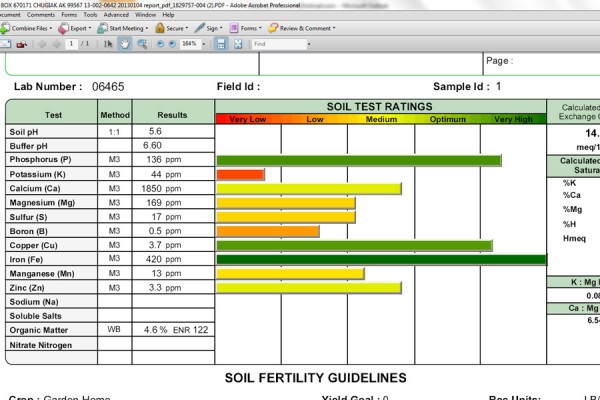
As you can see, the soil is very acidic (5.6) with less than 5% organic matter. The soils is also low in potassium, sulfur, and boron. There’s tons of iron in the soil too, which is surprising.
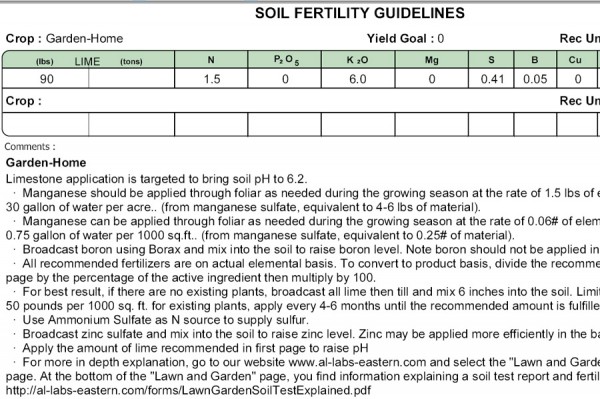
The second part of the document gives you recommendations. The recommendations are based on pounds per 1000 sq/ft. As you can see I need to add lots of lime, 6lbs of potassium, and 1.5lbs of nitrogen this spring.
Where do I get organic fertilizer here in Alaska?
My favorite fertilizer, which is local, organic, and affordable (when bought in bulk) is the fish-bone meal from Alaska Sea-Ag. They process it from the fish waste from the commercial fishing industry. My only complaint is that your garden will smell “fishy” for a week or two.
For raising potassium levels, I tend to use Sulfate of Potash, which also increases soil sulfur levels. You can pick it up at Alaska Mill and Feed.
I intend to amend the soil this year, then wait 2-3 years to test again. My compost pile is starting to grow, and I expect that the composted chicken litter, garden waste, and ashes from the wood stove should help deliver additional nutrients to the soil.
The sun is starting to feel the slightest bit warm, and we just started our storage onions from seed yesterday. All the best for your upcoming garden season!
Symptoms
It’s not often that I write about specific events in the news. Most stories get pushed through the news cycle like meat through a grinder. There’s often little left to say that hasn’t already been said and I rarely feel the need to comment on things that are already sensationalized.
However, the shootings in Connecticut are different. Maybe it’s because I have kids that are school aged. Maybe it’s because the story knocks on the deepest fears of a parent: losing a child. Maybe it’s because I am a teacher. But whatever the reason, it is events like these that cannot tolerate silence.
There’s no doubt in the coming days that public dialogue will shift from the tragedy that these families experienced to matters of policy. The gun lobby will recite their tired slogans. The gun-control proponents will do the same. Fingers will be pointed and news anchors will ask, in a vague and slightly sincere way, “How could this happen?” This story will dominate the news cycle for a week or two — at least until a more interesting story hits the front page. They will profile the shooter and try to explain what was wrong with him. They will interview people who said they never saw this coming, and others who say they did. And that will be that. Shootings in Oregon, in Connecticut , in Colorado, in Arizona and in Virginia will eventually be filed away, only to be mentioned as a comparison of body counts when the next mass shooting occurs.
In some ways, these things have become a sort of accepted archetype. Since Columbine (and maybe before) mass shootings have simply become a fact of post-modern society. It’s never a matter if another shooting will occur, but a matter of where and when. And in some way, we’re complicit in this.
Psychiatric patients aside, shootings like this demonstrate how untethered — how utterly disconnected — people can become. There is no other explanation for such violence and evil. It’s not access to guns that are causing these murders. It is not the failure of institutions or law enforcement to identify these people that is the problem. The problem is that we live in a society that allows for such extreme and destructive isolation.
It’s all too easy to be isolated from each other: from friends, from family, from a sense of community. These things root us. They provide a sense of how we are connected (and important) to each other, to our sense of place, and to the world. When I sit down with my daughter and read her a book, I understand that she is utterly dependent on me for not only the necessities of life, but also for teaching her a sense of place and belonging — to orient her in this world. When I gather to celebrate with friends, I begin to comprehend that I am forever tied to the narratives of many other people’s lives. When I worship in the pew on Sunday, I understand that my own history is written on the walls of the building and on the wrinkled faces of people who have watched me grow up. I am connected and my roots run deep.
We are not all so fortunate. The allure of our screens, the normalcy of divorce, and the breakdown of a sense of community allows us to cast ourselves adrift. It’s too easy to “plug in and tune out.” Without community and without connection, there are no outside forces to correct us, to question us, or to reveal our connection to the larger world. In my opinion, the problem of isolation is the problem of perspective. When I am connected to others, I am no longer the center of my own universe. I conceive of the world as a more complicated, connected, and wondrous place. But when I am isolated, my universe revolves around me. The daily struggles, failures, and problems of my life are not put in the larger context of a world far bigger than my personal problems. On the contrary, when I am isolated, my problems and struggles are the problems and struggles of my universe and become a much deeper, more serious problem. It is in this darkness of isolation, without the perspective and connection of a larger life, that we encounter the worst of ourselves.
I’m not suggesting that I know why the killer did what he did. Only God knows. But we have to look at such acts of violence not as an independent act, but as a symptom of something much larger. It’ a symptom of a disease. Our society and our lives are not healthy. Until we address the underlying disease — until we have the difficult discussions and the social revolution we need to become connected — we are simply treating the headache of a brain tumor with Advil.
Of sausage making and celebration
A couple weeks ago, my family, my dad, and my brother gathered together to make sausage. I’ve made sausage ever since I was a little boy. I remember sitting on the kitchen counter of my grandparent’s ranch, helping my grandma separate pork casings and check for holes. I remember helping my grandfather butcher a pig or two that he bought at auction to mix with the venison — I watched as a living animal became tranformed into food.
Sausage making has always been a sort of celebration. In the cutting and grinding of meat, the mixing of spices, in the stuffing and the smoking, there is ample time for celebrating. We retell hunting stories and dream of next season. We laugh at the funny or scary stories that the year’s hunt produced. We reflect on weather and missed opportunities. We give thanks for the pure and nutritious wild game we have harvested.
All of this celebration happens in the midst of good work. We are busy from morning to evening with cutting, cleaning, stuffing, smoking, and packaging. By the end of the day, we’re tired but happy at having put away food for the coming winter. The day is full of stories old and new, laughs, and memories…
I’ve been thinking about celebration a lot lately. As the holidays quickly approach I’ve been questioning what we celebrate and why we celebrate it. I’ve been thinking about how much of our cultural celebration has been co-opted.
Walk through any supermarket and one will see the “celebration industry” in full form. A cake is made from a box or purchased. Party decorations are readily available, pre-packaged, and licensed. One can even order balloons to be delivered instead of blowing them up themselves. What we call “celebrations” can easily fit into a shopping basket.
All of these products, of course, are promoted as making these celebrations “more convenient.” They’re marketed as taking the stress out of parties. What we forget is that celebration is more than just the party. Celebration is a matter of good work done together before and after the gathering. It is telling stories over a sink, or good-natured teasing, or of giving thanks for the past. This “good work” is largely removed from our pre-packaged celebrations. We hire florists and caterers. We buy branded themes of party favors and overly-sugared cakes. At the end of our so-called “celebration” we’re left with a trashcan full of plastic table clothes and a sugar hang-over. This is not true celebration.
Another problem with celebration is that we need something to celebrate. Celebration often comes at the end of a long and arduous journey — at the end of a marathon, the birth of a child, or the end of a hunt. These types of celebrations acknowledge the hard work and struggle that the participants have undergone. Of course, the highly commercialized holidays we celebrate — secular Christmas, Valentine’s Day, Halloween, and Thanksgiving — in no way celebrate our accomplishments or struggles. They are merely celebration for the sake of celebration. These holidays no longer celebrate a successful harvest, the struggles of saints, or the birth of hope. We’ve replaced the meaning of these holidays with hearts, turkeys, and tinsel, a poor substitute. If anything, secular Christmas and Thanksgiving are meaningful if only for the good work that is shared in preparing the afternoon meal of turkey and cranberry sauce.
Finally, “entertainment” has largely replaced celebration. If celebration is giving thanks and good work done together, entertainment is a passive substitute. Celebrating a winning football team or our favorite actor receiving an Oscar may give us the same sense of pleasure and pride, but it is a poor alternative. It may quench our thirst for a sense of accomplishment, but we have not shared with others in good work, in struggle, in success.
With these thoughts in mind, I’m half-tempted to abandon many of the holidays we celebrate. And as I make seafood chowder and bread bowls for old friends this weekend, hopefully I’ll be a little more mindful of the good work that accompanies our gathering together — our celebration.
A hunt to remember
This past weekend my brother Mark and I traveled 250 miles north to hunt caribou. We haven’t been hunting on a multi-day trip since high school, so it was fortunate that we were able to hunt together after many years. Below is the abridged version of our hunt:
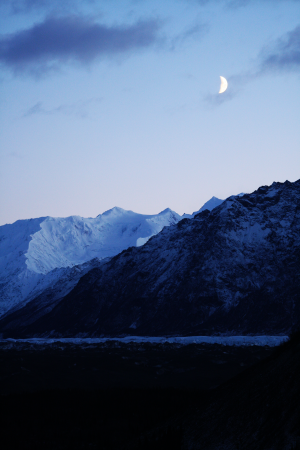 The snow had already graced the mountains here in Southcentral Alaska, and the forecast was calling for clear and cold weather up north. Mark and I left town at 4pm in his old pickup truck, pulling two old four-wheelers behind. The drive from Chugiak to Paxson is always a beautiful drive, but especially with cloudless skies and snow on the peaks, and we stopped a few times to take pictures of the scenery. We arrived in Paxson after dark and set up our tents in an old gravel pit near the banks of the Gulkana River as the temperature dipped to 0 degrees Fahrenheit.
The snow had already graced the mountains here in Southcentral Alaska, and the forecast was calling for clear and cold weather up north. Mark and I left town at 4pm in his old pickup truck, pulling two old four-wheelers behind. The drive from Chugiak to Paxson is always a beautiful drive, but especially with cloudless skies and snow on the peaks, and we stopped a few times to take pictures of the scenery. We arrived in Paxson after dark and set up our tents in an old gravel pit near the banks of the Gulkana River as the temperature dipped to 0 degrees Fahrenheit.
Sleeping inside of a sleeping bag is always a challenge, especially when confronted with the absurd contradictions of winter camping. Terrifying claustrophobia is just as bad as the cold that wakes you up if your face is exposed to the air. The contradictory desires of needing to pee and wanting to stay warm inside your cocoon can lead to an existential crisis. Somehow, we survived.
We woke up before dark, thawed our frozen pastries on the dash of my brother’s truck and sipped french press coffee, admiring the stars. The milky way in a northern night sky is breathtaking, and for all that we’ve gained through our technology, I can’t help but mourn the loss of dark and starry nights in our light-polluted world.
We drove through the darkness into the Alaska Range in order to spot caribou at first light. At 0 degrees, the four wheelers didn’t want to start or roll and after two hours of cursing, building tarp tents to warm the machines, and messing with an ill-tempered propane heater, we got one of the machines running. I sent Mark up the mountainside on the working ATV while I continued to tinker with the other machine. Eventually, I tried to make my way up the mountain, only to have my machine die and refuse to start. As I sat on the hillside, I could see Mark on his four wheeler. Suddenly, he jumped off and ran to an nearby boulder where he hid himself. Caribou must be coming.
As I watched my brother, two hunters walked past me on the trail. I heard a gunshot nearby, and the sound of a bullet ricocheting to my left. One of the hunters looked at me with concern.
Hunting for caribou on the Denali Highway is like combat fishing — with guns. I watched as four different groups o hunters descended on a small herd of caribou from four different directions. The two bulls in the herd didn’t stand a chance. After another gunshot, both bulls had been taken and the herd ran off into the mountains, nearly running my brother over in the process.
We decided to continue down the road.
We saw several other caribou herds over the course of the day, but they were either too far away or too many hunters were converging on them. We eventually found a small herd near the road. With hunters on a couple of nearby hills, we nonetheless attempted a stalk. Crossing a half-frozen swamp, I broke through the ice and filled one of my winter boots. A little worried my feet would freeze, we pressed on. Suddenly, the herd, which had been spooked by other hunters, started running across the swamp. A small bull was in the back. “Shoot that mother—ker!” I yelled at my brother. I ripped off my scope cover (never to be seen again) and fired two shots at the bull as he ran away at over 250 yards. He ran over the hill just as healthy and happy as when I first saw him. They don’t call me “Trigger” for no reason…
After our failed stalk we decided to drive past our camp and to head north of Paxson on the Richardson Highway, as that was where we saw the most sign. The sun was beginning its slow descent into the south-western sky. We saw a few caribou in the distance , but none of them were close enough to warrant a stalk.
Turning north on the Richardson Highway from Paxson, the highway immediately enters a small canyon. To the left are steep bluffs and the east fork of the Gulkana River. We could see caribou paths descending the ridges. I commented to Mark how difficult it would be to shoot a caribou in this area. One would have to wait for the caribou to descend the bluff, cross the river, and cross the road in order to shoot it literally in the ditch.
Several miles north of Paxson the canyon begins to disappear as the Gulkana River gives way to Summit Lake, from which it flows. As we drove towards the lake we saw a line of four trucks pulled over to the side of the highway — a sure sign that caribou were visible. Sure enough, on the opposite hillside, on the far banks of the river, were a heard of caribou. Upon further inspection, we saw that they were mostly bulls — big bulls.
Mark and I got really excited. A group of large bull caribou were clearly trying to cross the river and the highway right in front of us. There was only one problem. Three trucks full of over-eager hunters were parked behind us, waiting for their chance to rain down bullets on the caribou herd. I could envision fistfights and arguments as each hunter tried to shoot the biggest bull simultaneuously as they crossed the river. Luckily, Mark and I had an advantage.
Before we left Chugiak, we had both decided to throw a pair of chest waders into the truck for good measure. We didn’t really consider that it would be so cold in Paxson, we simply figured the waders might come in handy. Indeed they did. We realized that we could shoot the caribou before they crossed the river and before the caribou herd became a caribou buffet.
Mark and I got ran out of the truck with our guns. Neither of us were wearing gloves or coats, and Mark didn’t have a hat. We raced to a line of alder trees near the highway and waited as we watched the herd come closer. Two other hunters got out of their trucks and came up to us. “Your not going to shoot them across the river, are you?” one asked. “You need to wait for them to cross the river so we can all get a chance at them.”
“We have chest waders,” we replied, watching his face fall as he realized we would shoot them before he had the chance.
Here’s where I must confess the “dick move” that I made during these critical moments. As we crossed the roads with our guns, I asked Mark, “Do you want to shoot the first one?”
“Sure,” he replied.
As the caribou got closer, I whispered to my brother “don’t shoot, don’t shoot” waiting for them to get nearer to us. Dutifully, he did not shoot. Then, as the herd continued to approach…BANG! A large bull stood broadside to me at about 150 yards and I shot him.
“Was that you shooting?” Mark asked.
“Yes” I said sheepishly.
I still feel bad that I took the first shot. It was almost an automatic reflex, and I definitely deserve the ass-hole hunting buddy award for that one. Thankfully, Mark has been very gracious about it all.
The herd was confused for a moment, and the largest bull in the herd presented itself, but with a difficult shot. Mark fired once and missed, and the herd retreated into the brush. What happened next is still a matter of speculation, but either the same herd came back, trying to cross the river, or another herd arrived. Regardless, ten minutes later a herd of big caribou walked through the brush, directly toward us. They were directly facing us, and packed close together in the brush, creating difficult shooting conditions. Mark lined up his shot on a nice bull that had pulled away from the rest of the herd and shot him just before he crossed the river.
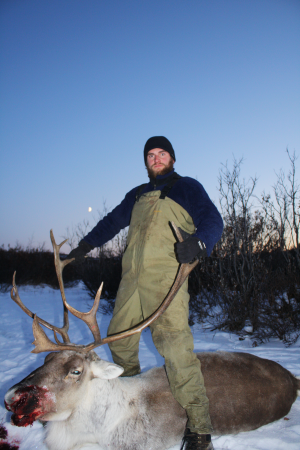 For Mark and I, the air was filled with jubilation. For the hunters in their trucks on the highway behind us, the air was full of disappointment and they began to slowly drove away.
For Mark and I, the air was filled with jubilation. For the hunters in their trucks on the highway behind us, the air was full of disappointment and they began to slowly drove away.
“What have we just done?” I asked Mark with a big grin on my face. The work was just beginning.
Before we shot the caribou, we had taken a very cursory glance at the river. It looked like there were shallow places we could cross, but we hadn’t looked very closely. Now we had no choice. We dawned our waders, grabbed our knives, game bags, and camera, and headed to the river. Thankfully, the river wasn’t terribly deep. It was only knee-high at the worst, and while the rocks were slippery, there were big stones one could wedge one’s foot between to cross. We quickly took pictures of our kills as the light began to fade and the cold began to creep into our skin.
While we knew we could get through the river, we hadn’t thought about what would happen when our wet waders and shoes began to freeze. I took my waders off because my feet were already becoming cold, while Mark left his waders on because he still felt comfortable. We got to work skinning the first caribou just as the last light left the sky, with only our headlamps and an emergency lamp to light our work.
We worked for about three hours to clean the two caribou. Mark’s boots and waders froze together into an inpermeable layer of ice. Even if his feet were cold, he couldn’t take his waders and shoes off. I had changed into my winter boots, but my waders and boots froze solid. I wasn’t sure I’d be able to get them back on. All the while, an Alaska State Trooper watched us from the highway, afraid we would drown while crossing the river in the dark. Mark eventually reassured him and he drove away.
After the caribou was cut up and bagged, we began the process of ferrying it across the river. I had to soak my boots and waders in the creek to get them on and Mark’s ice-encased feet were beginning to get really cold.
Crossing the river in the middle of the night presented it’s own challenges. One had to point their headlight into the water in order to see the rocks, being careful not to fall down while balancing caribou quarters on one’s back. We made it across without any big falls and quickly threw the caribou into the truck and began to drive back to camp.
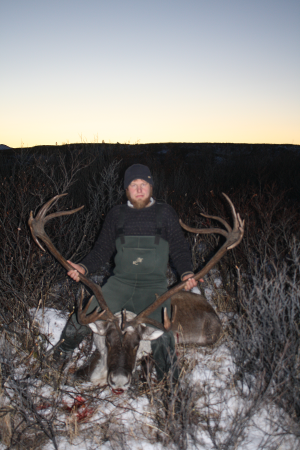 We got back to camp near midnight and sat in the truck for a few minutes, enjoying the warmth of the cab before making a quick dinner and crawling into our sleeping bags. It’s was brutally cold.
We got back to camp near midnight and sat in the truck for a few minutes, enjoying the warmth of the cab before making a quick dinner and crawling into our sleeping bags. It’s was brutally cold.
Mark’s feet had not thawed out in the truck. If anything, they were colder from lack of movement. We were presented with two options: cutting the frozen boots away from his feet with a knife or pouring boiling water on his boots. We elected for the boiling water. Mark practically purred when I poured the water over his feet. It warmed up his toes and melted the ice enough for him to squeeze his feet out of the boots and waders and into a pair of winter boots.
We jumped into our sleeping bags, hollering at the cold, and sleep came quickly.
The next morning, the overwhelming need to pee eventually won out against the instinctive desire to stay warm in the sleeping bag. We got up 8:30 and thawed pastries on the dashboard again. Looking at the giant pile of meat and the big antlers lying on the ground, the first full sentence I spoke that morning, in a type of hung-over, cold stupor was “What the hell did we do last night?”
We packed up our tents, loaded the meat, and began the long and beautiful drive back to Chugiak.
Besides the great memories made with my brother (we both agreed there’s no one we would have rather experienced that hunt with) it always feels good to come home from a wild harvest. We cut up around 170 lbs of caribou, much of which will be made into summer sausage and jerky. The scenery, camaraderie and the good, hard work of a weekend in the wild gives one a sense of peace, calm, and accomplishment that is hard to find in a post-modern world. As Wordsworth says, “in this moment there is life and food for future years.” The sense of peace in the wilderness, at least for me, seems enough to keep me going in a busy suburban world until I can again escape to the woods.
Thoughts from the garden
The growing season is over now that there’s snow on the ground. The garlic has been planted and I harvested the last of my broccoli, cabbage, and carrots a few weeks ago. It’s a good time of year to reflect on the garden:
This was the first year my garden was on my own property. For the last 6-7 years, I’ve been growing my veggies at my dad’s place. He has flat land, gets good sun, and doesn’t use his garden area. However, I was only able to get out there once a week, burned a lot of gas, and could not really work the garden properly.
This year, I put about 270 square feet of the yard under cultivation. I grew cabbage, broccoli, zucchini, turnips, rutabagas, pumpkins, carrots, celery, chives, salad mix, and beets. I am amazed at how much we harvested. Below are the highlights:
Turnips and Rutabagas:
It’s been years since I’ve grown rutabagas or turnips, because they are often overwhelmed by root maggots. This year however, root maggot damage was minimal, and by allowing the plants to stay in the garden longer, they were largely able heal themselves from the damage. My wife and I have never really cooked with rutabagas and turnips before, but we found them to be a great addition to soups or any other dish where we would normally use potatoes. Moderation was the key, though, and there was a ill-fated turnip-apple dessert we won’t be trying again.
Salad Mix:
We used salad mix seeds again this year. These mixes include lettuce, mustard, and a number of other greens. We spread a 16″x48″ strip of the greens and have been eating them ever since June. The weather this year prevented the lettuce from getting bitter, and the variety of greens in the mix means the taste of the salad changes throughout the season as the different greens matured at different times.
Broccoli and Cabbage:
The broccoli and cabbage did very well this year. We planted approx. 20 brocolli plants and that seemed about perfect for a family of 5 that loves broccoli. Having it in the yard meant we were able to harvest side shoots before they flowered. The beats ended up being too shaded by the turnips to produce. Yet again I planted far too much cabbage, and it looks as though I’ll be making sauerkraut this weekend.
Celery
We planted two celery plants this year: one was from a nursery and one was store-bought celery from the produce section. We ate the celery, took the base and planted it in March. By May it was a healthy (albeit small) celery plant. While celery is largely a long-season crop, it was nice to have some in the garden to use in soups and other dishes.
Berries/Fruit
We planted 4 more cherry trees (Bali) this year and two apple trees (Norland) that we got from Lowes. I planted two of the trees while there was still a couple of feet of snow on the ground in March, and they did far better than the ones I transplanted in April. In fact, one of the apple trees produced apples. It was a great year for the fruit trees, and each had new growth of more than two feet.
The apples trees we purchased were cheap: $15 for a 5 foot tree that had nice branches and flowers. They were grafted to Bud 9 rootstock. We’ll see if they survive the winter.
Raspberries were mediocre this year, with the season being about two weeks behind. I transplanted a new, larger variety from my dad’s house that took off like wildfire. I’m excited to harvest those canes next year.
The red currants I planted a couple years produced well this year, but just as they reached ripeness, the chickens escaped and ate all the berries. However, there was some fantastic cane growth (2ft+) and I’m expecting good things next year.
I’m looking forward to better harvests in the years to come!
Herbs
We grew chives, garlic chives, basil, and dill. The dill did amazing in our plastic-covered raised bed. It grew well over 4ft tall and had lots of leaves and seeds to harvest. I am amazed at the difference in taste between the dill we grew at home and dill bought at the store; the dill from home has a complexity of smell that I’ve never experience before.
The basil was too shaded from the nearby zucchini plants to grow much, and the chives were transplanted in late July, so we didn’t harvest much from them.
Conclusion:
While the proceeding text was probably only interesting to the most ardent garden-phile, It’s always nice to recount my growing season.
Next year will will plant a few less cabbage, and will probably skip the beats. We’ll also grow less romaine lettuce, as the salad mix really provided for all our needs. However, we’ll be trying butter lettuce, as some friends gave us some this summer and the whole family thought it was fantastic.
I plan on building at least the greenhouse floor before the snow falls. With a 10’x16′ greenhouse on the property, I’ll be able to explore the world of tomatoes, cucumbers, melons, and peppers next summer, which is very exciting for me! In the meantime, it’s time to clean up the garden, and to start thinking about making mead, sauerkraut, and soap.
This year’s honey harvest and notes on the beekeeping season.
This was my second year keeping bees, and with another year came a lot of new lessons. Below is a summary of my beekeeping season, my thoughts on the harvest, and my plans for next year.
The weather
Our spring started off very, very cold. Everything seemed to be about two weeks behind the whole summer, including the fireweed. The rest of the summer was fairly cloudy, with July starting off as the coldest on record. August and September were fairly nice, but it seemed like it was too little too late. Overall, there were a significant number of days that the bees didn’t venture out of the hive.
The season
I ordered 4lbs of Carnolian bees with two queens from Steve Victors this spring. I planned to try his two-queen hive system where you separate the queens and get the bees to recognize the pheromones of both. Unfortunately, after my first hive check, one of the queens was gone (presumably killed). All the bees had moved into one half of the super, so I took out the vertical divider to give them more room.
I fed the bees sugar syrup through May. I added a second deep super in early June and a honey super a few weeks later. I checked the bees every ten days and switched the order of the deep supers to keep them from swarming. They created a few supercedure cells, but didn’t seem to get too excited about swarming. In mid-July I found the queen and put her in the bottom super and added a queen excluder. This allows I harvested honey around August 15th and ended up with about 15lbs. of honey. It was far from what I had hoped to get, but also far more than I got last year. I think the cold spring did not help in terms of population buildup, and we had more than a few cool days.
Next year:
I’m going to try the double-queen system next year, and I may try to run another hive. I just need to see if I have enough drawn-out comb to make it worth my while. The goal for next year: 30lbs from a hive or 50lbs from two!
The economics of meat chickens
A couple of weeks ago, we butchered our meat chickens for the year. We lost 2 over the course of the 8 weeks we had them, and had to butcher one early because it had a bad foot. All in all, we put away 20 chickens into our freezer.
Raising meat chickens in Alaska is different from other places. Feed costs are expensive, as all the chicken feed shows up on a barge from the lower 48. Bears can be frequent and troublesome visitors (I lost 23 chickens to a bear last August). It’s not terribly warm here, even in the summer, so the chicks really need to be housed inside until they feather out at 3-4 weeks. All this makes the process challenging, but totally worthwhile after one bite of firm, flavorful chicken breast.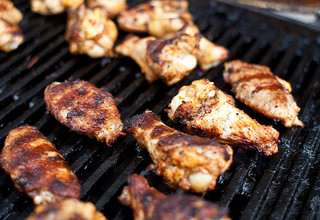
I took special care to track my costs this year, and here’s the breakdown:
Chicks 20 @$2.05 $41
Shipping for chicks $17
Electricity for heat lamp $17
Straw for bedding $36
400 lbs of food @.50/lbs $200
Total costs: $15.55 per chicken.
We got about 2.5-3 lbs of meat per chicken when we dismembered it into skinless breasts, thighs, drumsticks, and wings. If we only got 2.5 lbs a chicken, that averages $6.22/lbs. Gutting the whole carcass and keeping the skin on, they averaged out at about 5.5 lbs. making the costs about $ 2.82/lbs.
A friend of mine is letting his chickens free range, and he claims they’re hardly eating any feed, but they’re about 12 weeks old now, and he’s had to fence of all of his garden space to keep them out. Unfortunately, that’s impractical for me.
Anyone else had experience with the economics of raising meat chickens in AK?
Raised garden beds
I just finished putting in my raised garden beds, and wrote up a quick explanation of my process. You can find it here!
Spring Greens
A harvest from the garden is still a while off, but we’ve been eating fresh greens for about twoweeks now. Fireweed is edible when it’s young. Harvest the plants right after they emerge from the ground when they still look like a bundle of leaves. Eat the leaves, but avoid the stem as it tends to be bitter. The boys have been munching on them while they play in the yard, and they make a terrific garnish on a salad: they’re slightly bitter like European greens, but not overpowering.
Summer dresses
Over the years, Ashlee has become more interested and adept at sewing. Her latest project was a few summer dresses she sewed without a pattern — just ideas she had in her head. She managed to sew all three with River, Aurora, and our nephew Summit in tow!
[slideshow id=1 w=600]
Moose summer sausage
 This weekend my brother and I made 55 lbs of moose summer sausage. Below are my notes and a little bit about the process:
This weekend my brother and I made 55 lbs of moose summer sausage. Below are my notes and a little bit about the process:
We made two batches of summer sausage. The first was mixed 50/50 with pork shoulder. The second batch had 1 part pork for 2 parts moose. We used a the Excalibur seasoning from Alaska Butcher Supply. They’re great people and really helpful. We chose not to add any nitrates to our sausage. While that increases the chance of spoilage, our processing and meat is done very cleanly. We won’t be able to put a stick of the sausage in a backpack for a week like the store-bought stuff, but it is worth it not to bomb our guts with preservatives.
We ground the pork and moose separately, then mixed them together, along with the seasoning, in the aforementioned ratios. Then we ground the meat a second time once the seasoning was added. We were told to grind it a second time using a smaller sized grinding plate, but the meat just wasn’t moving through it efficiently so we used the same sized plate. The texture came out fine.
After we ground the meat, we used a sausage stuffer to stuff the casings. We found that one needed to push the sausage into the casing fairly hard to remove the air pockets. After the sausage was cased, we let it warm up to room temperature until it was time to put it in the smokers. We put the sausage in the smoker at the following temperature for the following times:
- 120 F for 1.5 hours
- 140 for 1 hour
- 160 for 1/2 hour
- 180 until internal temp of sausage reached 154F.
We smoked it heavily during the process with hickory smoke. Because of the fibrous casings, the sausage still only retained a subtle smoke flavor. After the sausage reached 154F internal temperature, we immediately put the sausage into cold water until the internal temp was about 90F. We put the sausage in the fridge and vacuum sealed it the next day.
Notes:
- I enjoyed the sausage with 2 parts moose better. It tasted more like I expected it would
- The seasoning was mediocre. It still tastes good, but next time I’ll experiment with my own recipe.
- The homemade smoker we use does not have very even temperature, so the sausages on the outside actually got overcooked. It made the texture of the sausage near the casing dry and somewhat crumbly. Lesson learned.
Snow White’s very bad day
Yesterday one of our chickens, Snow White, was attacked by a dog. The dog didn’t kill her, but she had a deep puncture wound on her back and a lot of skin missing behind one of her legs. Normally, we wouldn’t have cared that much, but Snowflake is the family’s favorite chicken. She likes to be held, will perch on your shoulder, and is very docile. (Yes, I realize that the previous sentence makes me sound like a crazy chicken person.)
We isolated Snow White from the rest of the chickens until we decided what to do. She was pretty injured, and her wounds did not look like they would heal easily. We thought it might be best to try to stitch her up, especially the wound behind her leg. We even put a towel on the deck and had saline solution, a needle, and thread ready. As I held her while Ashlee readied the needle, we decided we couldn’t go through with it, and would take the chicken to the vet the next day.
First off, I’m a little embarrassed. We took a $2.50 chicken to the vet for a bill that will be substantial, but I just couldn’t resist my sons’ and my wife’s puppy-dog looks. The vet said she’ll probably be fine. She won’t get stitches and we’ll be giving her antibiotics and putting cream on the wounds. We’ll have to isolate her, because we won’t be eating her eggs while she’s on antibiotics.
And that is the story of Snow White’s very bad day.
Way too much snow
Today we broke the Anchorage snowfall record. As of right now, we’ve received 133.6 inches of snow this winter. That’s over 11 feet. Today Alaskans, cabin-crazed from the winter, are all talking excitedly about how we broke the record. I’m thinking about my garden and bees and feeling like Scrooge. River, however, is undeterred and has welcomed spring:
Time to turn off the lights, ladies.
 This week those of us living in southcentral Alaska have 14 hours of daylight. That means our chickens no longer need supplemental light. Chickens lay best when they get at least 14-16 hours a day of sunlight. We reach that milestone this week, so turn off those lights and save yourself some money! Those of you living in the area know we haven’t need heat lamps for a while now. My heat lamp has been off for about a month and the solar heating from the sun, and the heat of the chickens, has been more than enough to keep the coop above freezing.
This week those of us living in southcentral Alaska have 14 hours of daylight. That means our chickens no longer need supplemental light. Chickens lay best when they get at least 14-16 hours a day of sunlight. We reach that milestone this week, so turn off those lights and save yourself some money! Those of you living in the area know we haven’t need heat lamps for a while now. My heat lamp has been off for about a month and the solar heating from the sun, and the heat of the chickens, has been more than enough to keep the coop above freezing.
Make a seed organizer for under $10
I just put up a tutorial about how to make a seed organizer like the one above. You can find it here. I hope you enjoy!

